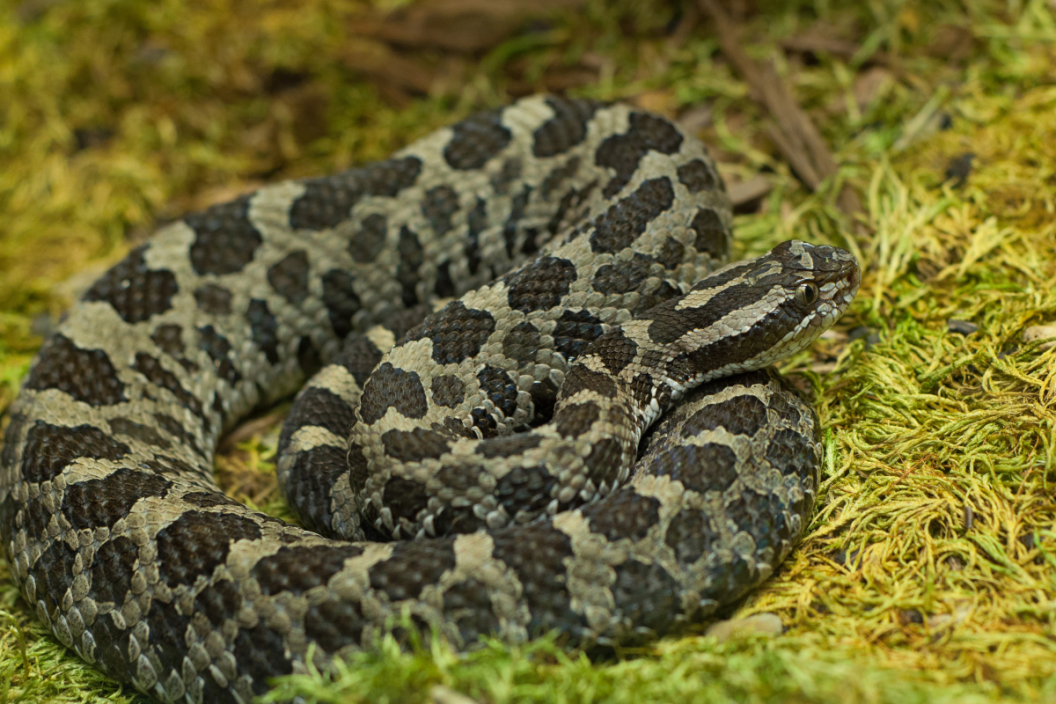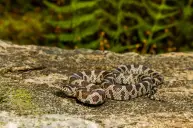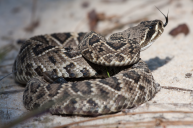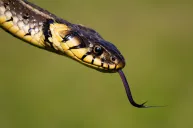This venomous snake can be a rare sight in the wild.
Nothing seems to gets people on edge quite like the sound of a rattlesnake. People just have a natural fear of snakes, but that fear seems to be increased when you start talking about a venomous snake species. Here in the Midwestern United States, there is usually only one rattlesnake and that is the Eastern Massasauga rattlesnake, (Sistrurus catenatus).
This snake does not grow nearly as large as other North American rattlesnakes like the Timber or Western Diamondback. This pit viper is a rare sight, but there are all sorts of urban legends and myths about them we feel should be cleared up.
This information is helpful for all hikers, hunters, fishermen and campers planning on spending any amount of time outside in the places this snake calls home.
What does an Eastern Massasauga rattlesnake look like?
There is a lot of misinformation about this snake out there and most of it has to do with the snake's size and appearance. This is one of the smallest venomous snakes in North America. They can grow up to 30 inches long, but most top out at only 20-24 inches.
Coloration of this snake can vary wildly. The most distinctive feature are the large blotches across the back. These can be a light brown or even black in appearance. These blotches are usually set against a body that is tan to brown or light gray. Sometimes there are specimens that are dark to the point where they look almost black and the brown blotches are not as obvious. We like the Michigan DNR's description of the blotches in the video above as having a "video game controller" or "bowtie" shape. Young snakes will often be brighter in coloration than the adults.
The head has the typical triangular shape one would expect of a venomous snake species. The pupils are vertical. Of course, the biggest tell-tale sign is the hollow, segmented tail that produces the famous "rattling" sound that this type of snake is known for.
What is the range of the Eastern Massasauga rattlesnake?
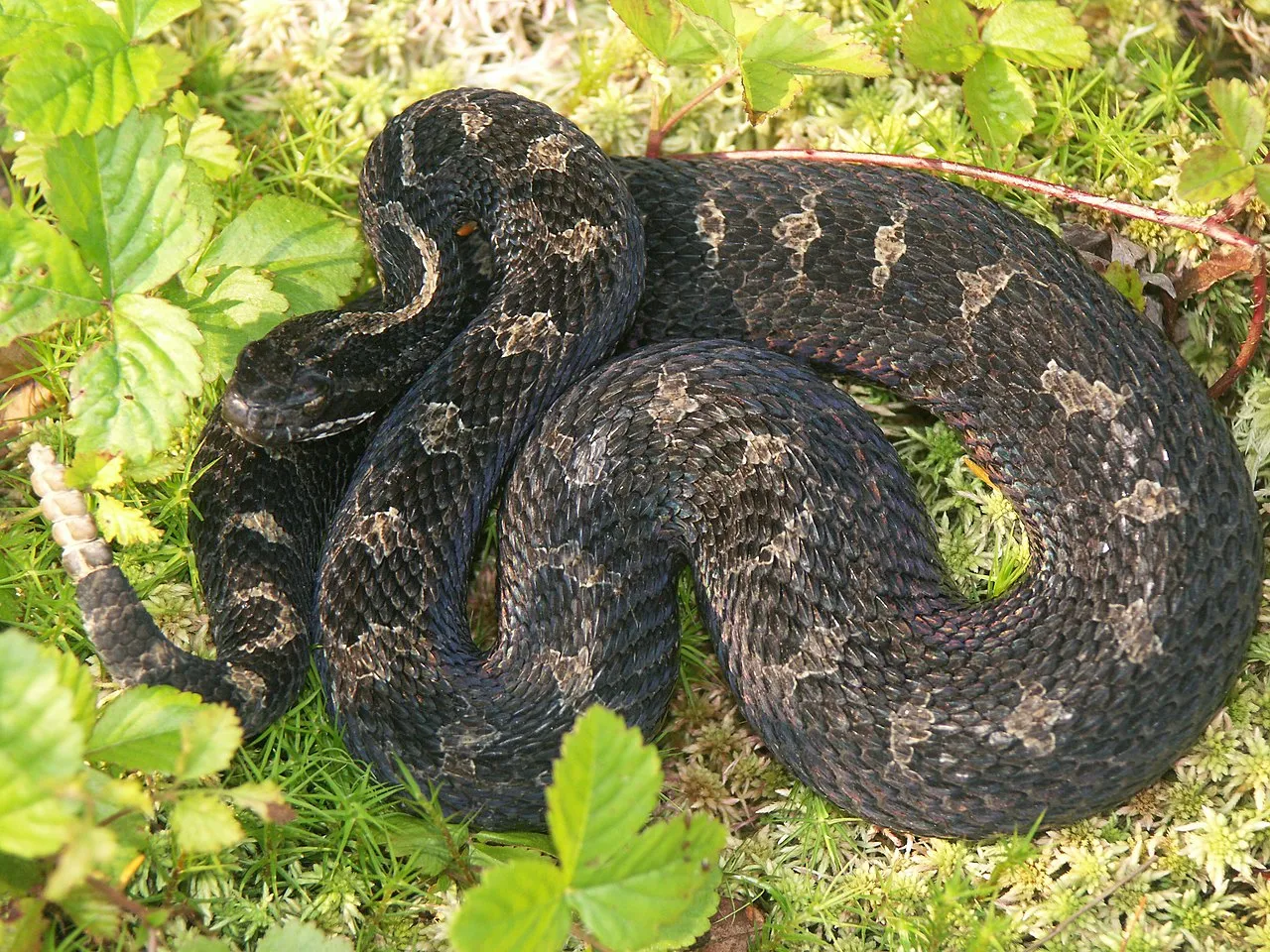
Wikimedia Commons:USFWSmidwest
There seems to be a lot of confusion on just where this snake lives and where it does not. Because it is such a shy creature, it can be hard for biologists to find. The U.S. Fish and Wildlife Service says that most populations are isolated pockets scattered throughout the Midwest. Their range extends as far east as New York state and as far west as Iowa. Some isolated populations are said to live as far south as Mexico, but they aren't observed very often. In addition to the U.S., they are also found in Canada, scattered across parts of the southern half of Ontario.
Most people who encounter this snake seem to do so near the Great Lakes, especially Illinois and southern Michigan. It is also found in parts of Indiana, Wisconsin, Missouri, Pennsylvania and Ohio. One does have to watch out with Ohio because the state also has a small Timber Rattlesnake population. Just remember that the Massasauga is usually going to be significantly smaller in size.
Confusion often sets in because this snake has a ton of nicknames depending on the region. In Michigan, you will hear "Michigan Rattler" or "Swamp Rattler" quite often. "Gray Rattlesnake" is a named used in both Iowa and parts of Canada. Just know when you hear names like this, they are typically referring to the Eastern Massasauga.
Where do Eastern Massasauga rattlesnakes live and what do they eat?
Most people's first thought when they think of rattlesnakes is dry, dusty country or high desert. However, the Massasauga rattlesnake tends to prefer areas that are just the opposite. They tend to hang out in damper, wetland habitats. Ideally if they can find areas like floodplains and marshes. There is an area not far from my home that the Michigan DNR has recognized as a rattlesnake hotspot. It is a nice mix of rolling hills and wet prairie fen. There is careful habitat management happening in that area to help preserve the species.
If an area has an abundance of crayfish burrows or small mammal burrows, it is likely a good spot for Massasauga. Mostly because these are their preferred hibernation sites during the long winter months of the Midwest.
As for diet, their preferred habitat plays a large part in where they live too. Wetlands and marshes are the ideal places for small mammals like mice, shrews and voles this rattlesnake likes to eat. However, they have also been observed eating lizards, frogs, and other amphibians. Crayfish and other small animals are also on the menu. The Massasauga rattlesnake is also a confirmed cannibal. It has been observed preying on other snakes many times in the past.
Are Eastern Massasaugas an endangered species?
This snake is a rather rare sight due to its shy, reclusive nature. However, it is also because Massasauga populations are getting harder to find. The U.S. Fish and Wildlife Service lists the Eastern Massasauga as a threatened species. Many states started listing the snake as either threatened or endangered before the species was finally given a federal listing of threatened.
Ontario also listed the species as threatened under their own endangered species act in 2007. The biggest factor for declining rattlesnake numbers is simply habitat loss. Many wet prairies and other upland habitat ecosystems that are ideal for snakes are also prized by developers for homes, roads and golf courses. This species gives birth to live young and the baby snakes are especially susceptible to predation.
As a result, many state natural resources agencies are working on habitat management plans to help the snakes make a comeback. Many of these areas are set aside as public parks or wildlife preserves and specific measures are taken to help make the habitat ideal for snakes. Remember that preserve I mentioned that is close to my home? Officials have done controlled burns there in the past, which is one of the recommendations by the U.S. Fish and Wildlife Service. Burns help preserve snake habitat by killing off non-native plants that were previously destroying the habitat.
Because most people have never seen one of these snakes, it seems likely it has an uphill climb to get out of danger. It will probably take some time, but at least the snake is not at a critical spot yet. Keep in mind that since the Massasauga is under federal protections, killing one is illegal and could land you in a lot of hot water with local authorities.
Are Eastern Massasaugas dangerous to humans?
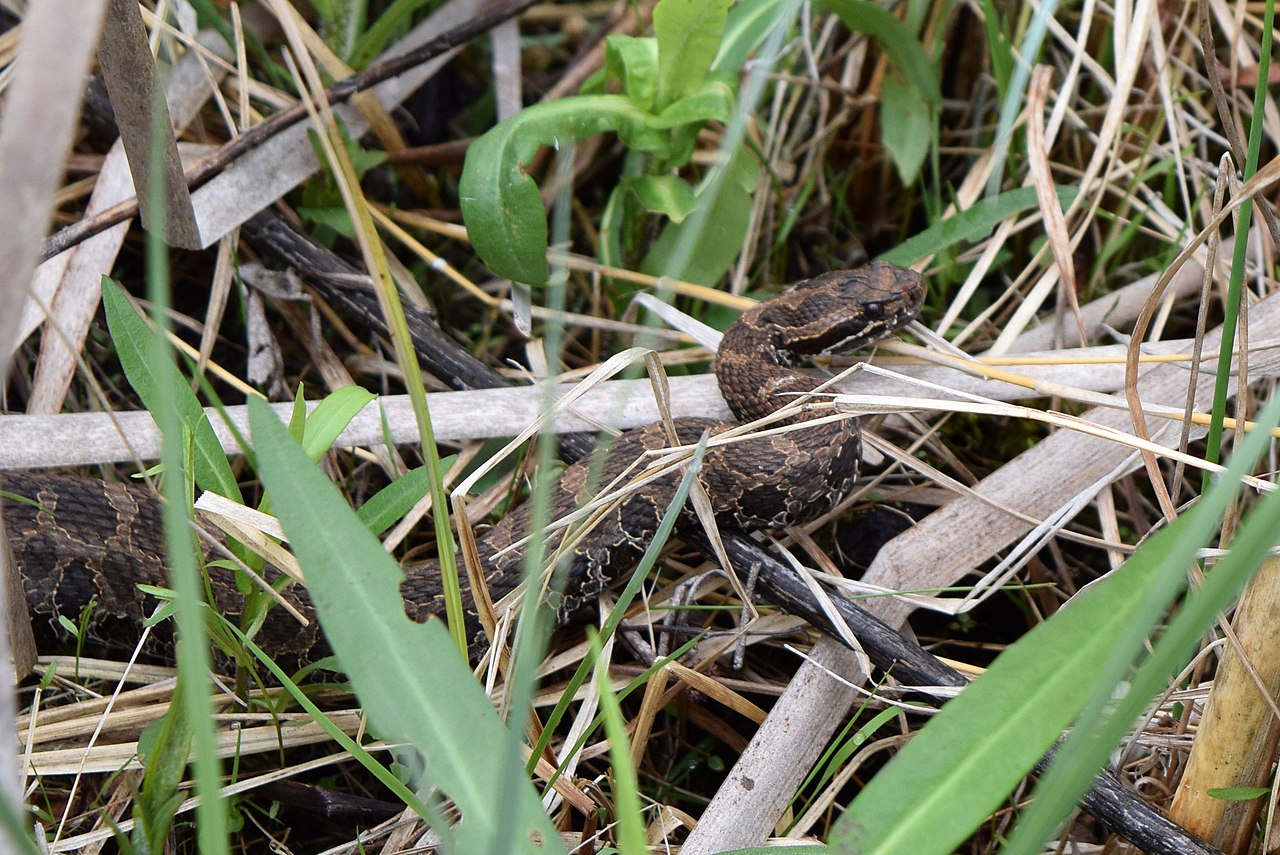
Wikimedia Commons:USFWSmidwest
Contrary to popular belief, the Eastern Massasauga rattlesnake does not present much of a threat to humans. They are venomous and people have died from bites from this snake, but such incidents are exceedingly rare. The main reason is simply because it is so uncommon to run across this species in the wild, even if you spend every day outdoors in its natural habitat. I have lived in Michigan nearly my whole life and only know a handful of people who have ever seen one.
As we have already mentioned, this species has a rather shy and reclusive nature. This snake is more likely to try and slither away quickly than stay and fight the way other rattlesnakes do. Most people who are bitten do seem to recover from the snakebite.
Victims usually describe severe swelling or a burning pain in the area around the bite. In many of the accounts I have found online, most bites seem to happen when someone is either unnecessarily handling the snake, or they step on it by accident. In some cases, the Massasauga does not inject any venom at all. This type of bite is not as dangerous, but it is said it still will cause severe pain. One thing to keep in mind is that antivenom for Massasauga bites often is not available. Most hospitals do not have any in stock. Mostly because the species is so rare that it is hard to find antivenom. The other reason is because the bites are so uncommon that many doctors have never even treated one.
If you happen to see one of these snakes in the wild, we recommend observing it from a distance and then letting it go on its way. Remember, if you leave the snake alone, it will probably leave you alone too.
For more outdoor content from Travis Smola, be sure to follow him on Twitter and check out his Geocaching and Outdoors with Travis YouTube channels.
NEXT: MAN BUILDS INCREDIBLY COZY TINY CABIN IN PICKUP TRUCK BED
WATCH
